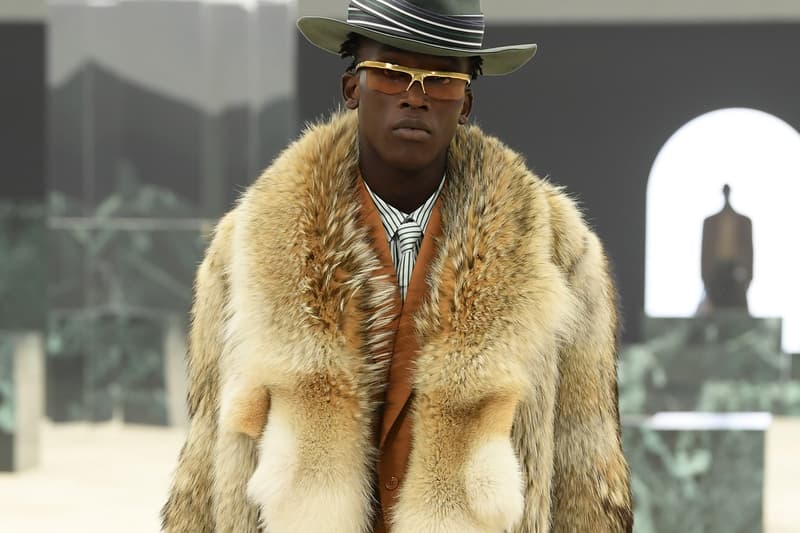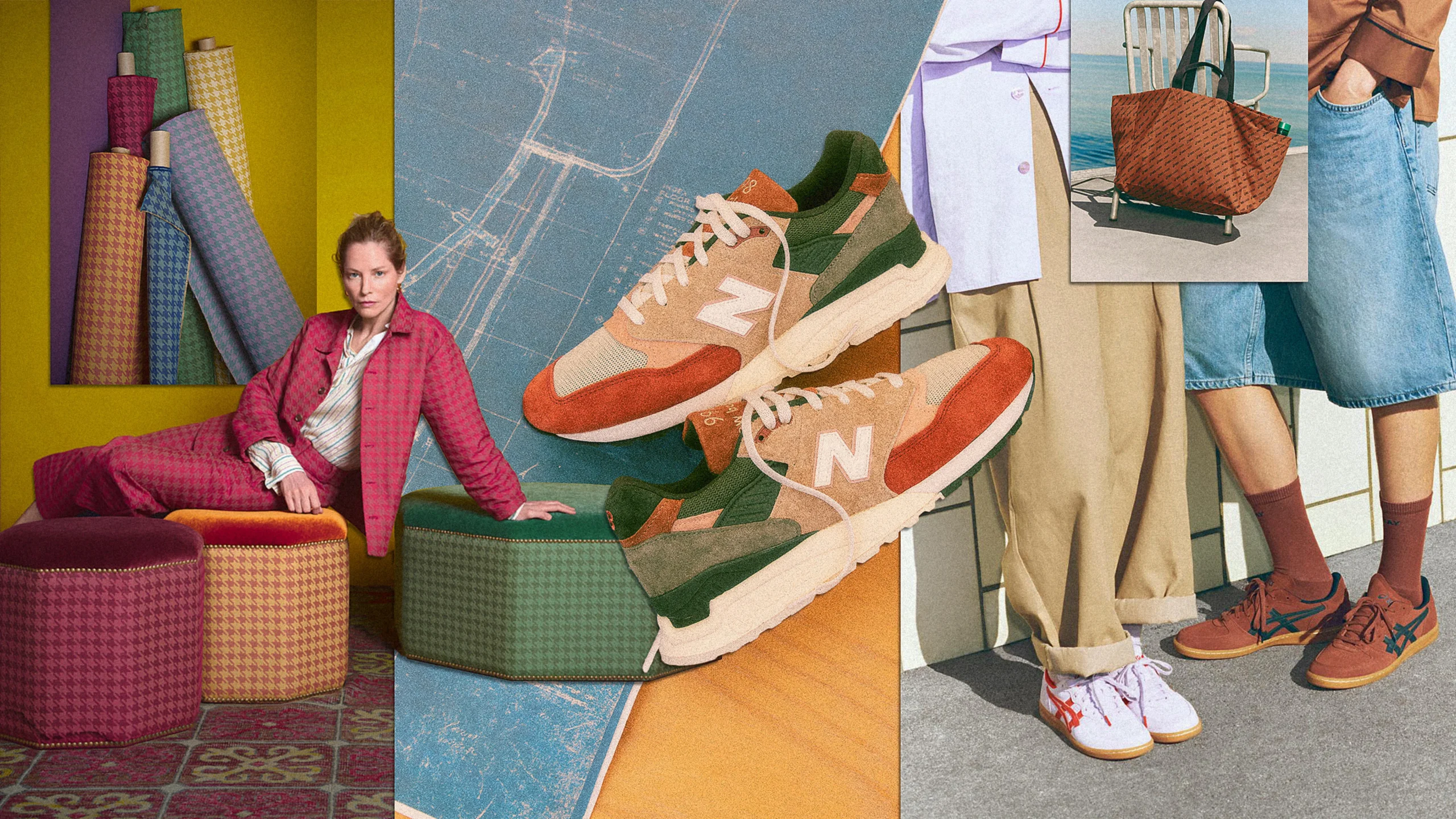Fur first came into fashion during the Middle Ages, around the 11th century. It was initially a symbol of wealth and status.
Fur’s journey into the realm of fashion began in the Middle Ages. Nobility and royalty adorned themselves with luxurious fur garments to display their wealth and social standing. As trade routes expanded, fur became more accessible, and its popularity soared.
By the Renaissance, fur was a staple in high fashion, favored for its warmth and elegance. Today, while ethical concerns have shifted consumer preferences, fur remains a controversial yet enduring element in the fashion industry. The history of fur in fashion reflects broader social, economic, and cultural trends over the centuries.

Introduction To Fur Fashion
Fur has always fascinated people. It was a symbol of luxury and warmth. This fascination led to the rise of fur fashion. Let’s explore the rich history and cultural impact of fur.
Historical Significance
Fur fashion dates back to ancient times. Early humans used fur to keep warm. Fur was practical for survival.
Later, fur became a status symbol. Only the rich could afford it. Kings and queens wore fur to show power and wealth.
During the Middle Ages, fur trading became big business. Many countries traded fur. This trade brought wealth and prosperity.
Cultural Impact
Fur influenced many cultures. It was more than just clothing. Fur became part of traditions and rituals.
In some cultures, fur was used in ceremonies. It represented strength and courage. People respected those who wore fur.
In modern times, fur fashion evolved. Designers used fur in new ways. They created beautiful and unique garments.
Today, fur fashion still impacts society. It sparks debates about ethics and sustainability. But its influence on culture remains strong.

Ancient Beginnings
The allure of fur has captivated humans for thousands of years. Ancient civilizations used it for warmth and status. Let’s explore the origins of this fascinating trend.
Prehistoric Uses
Early humans valued fur for its warmth and durability. Cave paintings show people wearing fur garments. They hunted animals and used their pelts for clothing.
During the Ice Age, fur was crucial for survival. The cold climate made fur clothing essential. People crafted simple yet effective fur garments.
| Period | Use of Fur |
|---|---|
| Prehistoric Times | Warmth and protection |
| Ice Age | Essential for survival |
Early Civilizations
In ancient Egypt, fur was a symbol of wealth. Pharaohs and nobles wore fur-lined robes. They imported exotic furs from distant lands.
The Romans also prized fur. They used it for both practical and ceremonial purposes. Roman soldiers wore fur for warmth during campaigns.
- Egypt: Fur as a status symbol
- Rome: Practical and ceremonial use
In China, fur held cultural significance. It was used in traditional ceremonies. Fur garments were passed down through generations.
Overall, ancient civilizations recognized the value of fur. They used it for warmth, status, and tradition.
Medieval Era
The Medieval Era saw the rise of fur in fashion. During this period, fur became a symbol of status and luxury. It was not just a material for warmth but a marker of social standing. The use of fur was prevalent among the elite and the wealthy.
Nobility And Fur
Fur was a favorite among nobility. Kings and queens adorned themselves with fur-trimmed robes. Fur was used in crowns, capes, and cloaks. They chose furs like ermine, sable, and mink. These furs were rare and expensive, enhancing their prestige.
| Type of Fur | Used By | Purpose |
|---|---|---|
| Ermine | Royals | Crowns and Capes |
| Sable | Nobles | Cloaks |
| Mink | High-ranking Officials | Robes |
Symbol Of Wealth
Fur was a symbol of wealth in the Medieval Era. Rich merchants and landowners wore fur to show their status. The types of fur they wore indicated their wealth. Only the rich could afford rare furs. Common people wore simpler, cheaper furs.
- Ermine – Worn by royals
- Sable – Preferred by nobles
- Mink – Used by high-ranking officials
- Rabbit and Fox – Commoners
Fur showed social rank clearly. The richer you were, the finer the fur you wore. This practice made fur a key part of medieval fashion.
Renaissance To Baroque
The transition from the Renaissance to the Baroque period saw a shift in fashion trends. Fur became a symbol of status and elegance. This period marked a significant evolution in the use of fur in clothing and art.
Evolving Styles
During the Renaissance, fur-lined garments became popular. Nobles and wealthy merchants adorned themselves with fur-trimmed robes. These garments often featured mink, sable, and ermine. These furs were prized for their softness and warmth.
In the Baroque period, the use of fur expanded. Fashion became more elaborate. Fur capes, muffs, and hats became common accessories. Richly decorated coats with fur collars were highly sought after.
| Renaissance | Baroque |
|---|---|
| Fur-lined garments | Elaborate fur accessories |
| Mink, sable, ermine | Fur capes, muffs, hats |
| Simple designs | Richly decorated coats |
Art And Fur
Artists from the Renaissance often depicted figures wearing fur. These paintings highlighted the luxury of fur garments. Fur in art symbolized wealth and power.
In the Baroque period, fur continued to play a role in art. Paintings from this era often showcased opulent furs. Royal portraits frequently featured subjects draped in luxurious fur. This further established fur as a status symbol.
The use of fur in art and fashion during these periods was undeniable. Both eras celebrated the elegance and sophistication that fur brought to clothing.
19th Century Trends
The 19th century saw a significant shift in fashion. Fur became a symbol of luxury and status. Innovations during this era changed how fur was processed and worn.
Industrial Revolution
The Industrial Revolution played a huge role in fur fashion. New machines made fur processing faster and cheaper. People could now afford fur clothing.
Factories started producing fur garments on a larger scale. This increased availability made fur more popular among the middle class. Fashion magazines began showcasing fur-trimmed coats and accessories.
| Innovations | Impact |
|---|---|
| New sewing machines | Faster production |
| Improved tanning methods | Better quality fur |
Mass Production
Mass production techniques revolutionized the fur industry. Factories could now produce thousands of fur items quickly. This lowered the cost and increased accessibility.
- Ready-to-wear fur coats became common.
- Fur-trimmed clothing gained popularity.
- Fur hats and gloves were in vogue.
Fashion designers started using fur in their collections. Fur was no longer just for the elite. People from various social classes wore fur garments.
20th Century Fashion
The 20th century fashion saw a dramatic shift in trends. Fur became a symbol of luxury and sophistication. It was a period where fashion and culture intertwined more than ever.
Hollywood Glamour
In the early 20th century, Hollywood played a pivotal role in popularizing fur. Movie stars wore luxurious fur coats on and off-screen. This elevated fur’s status as a must-have fashion item. Icons like Marilyn Monroe and Greta Garbo were frequently seen draped in fur. Their glamorous images captivated the public. Fur became synonymous with stardom and wealth.
Designer Influence
Top designers also contributed to fur’s popularity. Houses like Chanel and Dior incorporated fur into their collections. They used fur to create elegant and opulent designs. This made fur highly desirable among fashion enthusiasts. Designers experimented with different types of fur. They created innovative and stylish garments that set trends.
Fur was not just for outerwear. Designers used it in accessories, hats, and stoles. This versatile use of fur made it a staple in 20th century fashion.
| Designer | Contribution |
|---|---|
| Chanel | Introduced fur-trimmed suits and coats |
| Dior | Used fur in elegant gowns and accessories |
| Fendi | Revolutionized fur with modern techniques |
By the mid-20th century, fur had cemented its place in fashion. It was a symbol of both status and style.
Modern Perspectives
The fashion industry has transformed significantly over the years. Fur once symbolized luxury and status. Today, people view it through a different lens. Modern perspectives focus on ethics, sustainability, and innovative alternatives.
Sustainability Concerns
Many consumers now prioritize sustainable fashion. Fur production raises serious environmental concerns. It involves harmful chemicals and extensive use of resources. Fur farming also impacts biodiversity and wildlife habitats.
Fashion brands are shifting towards eco-friendly practices. They aim to reduce their carbon footprint. Sustainable materials and ethical sourcing are becoming the norm. Consumers demand transparency and accountability from fashion companies.
Faux Fur Movement
The faux fur movement has gained momentum in recent years. Faux fur offers a cruelty-free alternative to real fur. It mimics the look and feel of genuine fur without harming animals.
Many designers and brands now embrace faux fur. It aligns with the growing demand for ethical fashion. Faux fur is also more affordable and versatile. It allows for creative freedom in design and style.
Below is a comparison of real fur and faux fur:
| Aspect | Real Fur | Faux Fur |
|---|---|---|
| Animal Welfare | Involves animal harm | Cruelty-free |
| Environmental Impact | High | Lower |
| Cost | Expensive | Affordable |
| Versatility | Limited | High |
Consumers are more aware of their choices. The faux fur movement reflects this shift. It shows how fashion evolves with society’s values.
Fur In Contemporary Fashion
Fur has made a strong comeback in contemporary fashion. Designers and brands are reimagining fur in modern ways. This has led to fresh trends on runways. Here’s a closer look at fur’s presence in today’s fashion world.
Current Designers
Many renowned designers are embracing fur in their collections. They use both real and faux fur to create stunning pieces. Some of the leading names include:
- Gucci – Known for bold designs and high-quality materials.
- Prada – Mixes classic and innovative styles.
- Fendi – Famous for luxurious fur coats and accessories.
These designers showcase fur in unique and creative ways. They appeal to a wide range of fashion enthusiasts.
Runway Trends
Runway trends featuring fur are diverse and eye-catching. Here are some notable trends:
| Trend | Description |
|---|---|
| Fur Accents | Small fur details on collars, cuffs, and hems. |
| Bold Colors | Bright and unconventional fur colors making statements. |
| Mix and Match | Combining fur with different materials and textures. |
These trends make fur accessible and stylish for various seasons and occasions. The use of fur has evolved, reflecting changing tastes and preferences in the fashion industry.

Frequently Asked Questions
When Did Fur Become Fashionable?
Fur became fashionable in the 11th century. It was popular among European royalty. The trend spread across social classes over time.
What Types Of Fur Were First Used In Fashion?
Early fashionable furs included sable, ermine, and mink. These were favored for their softness and warmth. They were also symbols of status.
Why Was Fur Popular In Early Fashion?
Fur was popular for its warmth and luxury. It was also a status symbol. Royalty and the wealthy often wore fur.
How Did Fur Fashion Evolve Over Time?
Fur fashion evolved with trends and technology. It expanded from royalty to commoners. Innovations in processing made fur more accessible.
Conclusion
Fur has played a significant role in fashion history. Its luxurious appeal continues to captivate designers and consumers alike. Understanding its origins helps appreciate its lasting influence. As ethical considerations grow, the future of fur in fashion remains dynamic. Stay informed and make conscious choices for a stylish yet responsible wardrobe.
